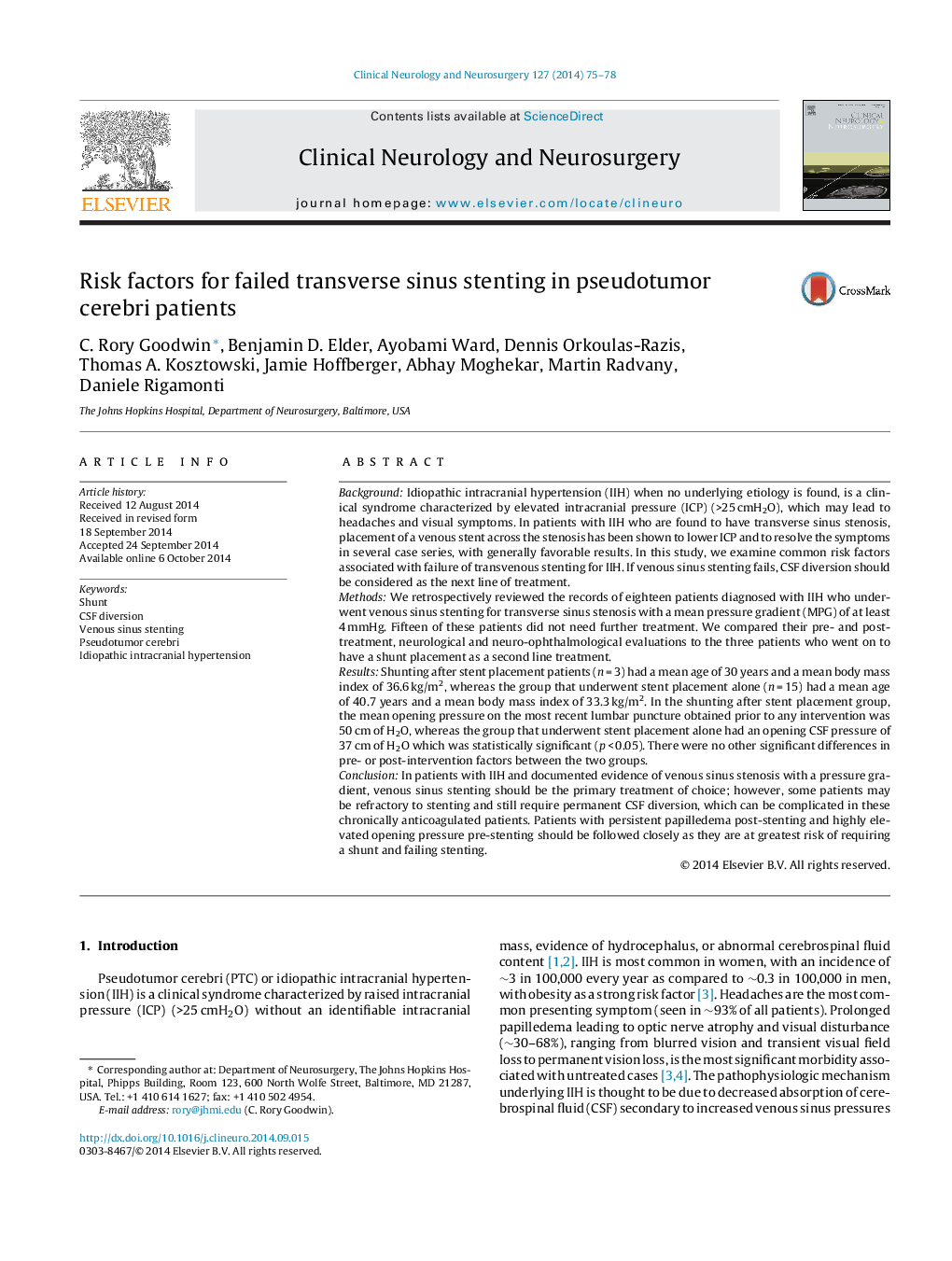| کد مقاله | کد نشریه | سال انتشار | مقاله انگلیسی | نسخه تمام متن |
|---|---|---|---|---|
| 3040059 | 1579695 | 2014 | 4 صفحه PDF | دانلود رایگان |
• Venous stenting should be the primary treatment for IIH with venous sinus stenosis.
• If venous stenting fails, CSF diversion should be considered as secondary treatment.
• Mean opening pressure was higher in shunt after stent group than stent alone group.
• High opening pressure pre-stenting should be followed closely.
BackgroundIdiopathic intracranial hypertension (IIH) when no underlying etiology is found, is a clinical syndrome characterized by elevated intracranial pressure (ICP) (>25 cmH2O), which may lead to headaches and visual symptoms. In patients with IIH who are found to have transverse sinus stenosis, placement of a venous stent across the stenosis has been shown to lower ICP and to resolve the symptoms in several case series, with generally favorable results. In this study, we examine common risk factors associated with failure of transvenous stenting for IIH. If venous sinus stenting fails, CSF diversion should be considered as the next line of treatment.MethodsWe retrospectively reviewed the records of eighteen patients diagnosed with IIH who underwent venous sinus stenting for transverse sinus stenosis with a mean pressure gradient (MPG) of at least 4 mmHg. Fifteen of these patients did not need further treatment. We compared their pre- and post-treatment, neurological and neuro-ophthalmological evaluations to the three patients who went on to have a shunt placement as a second line treatment.ResultsShunting after stent placement patients (n = 3) had a mean age of 30 years and a mean body mass index of 36.6 kg/m2, whereas the group that underwent stent placement alone (n = 15) had a mean age of 40.7 years and a mean body mass index of 33.3 kg/m2. In the shunting after stent placement group, the mean opening pressure on the most recent lumbar puncture obtained prior to any intervention was 50 cm of H2O, whereas the group that underwent stent placement alone had an opening CSF pressure of 37 cm of H2O which was statistically significant (p < 0.05). There were no other significant differences in pre- or post-intervention factors between the two groups.ConclusionIn patients with IIH and documented evidence of venous sinus stenosis with a pressure gradient, venous sinus stenting should be the primary treatment of choice; however, some patients may be refractory to stenting and still require permanent CSF diversion, which can be complicated in these chronically anticoagulated patients. Patients with persistent papilledema post-stenting and highly elevated opening pressure pre-stenting should be followed closely as they are at greatest risk of requiring a shunt and failing stenting.
Journal: Clinical Neurology and Neurosurgery - Volume 127, December 2014, Pages 75–78
